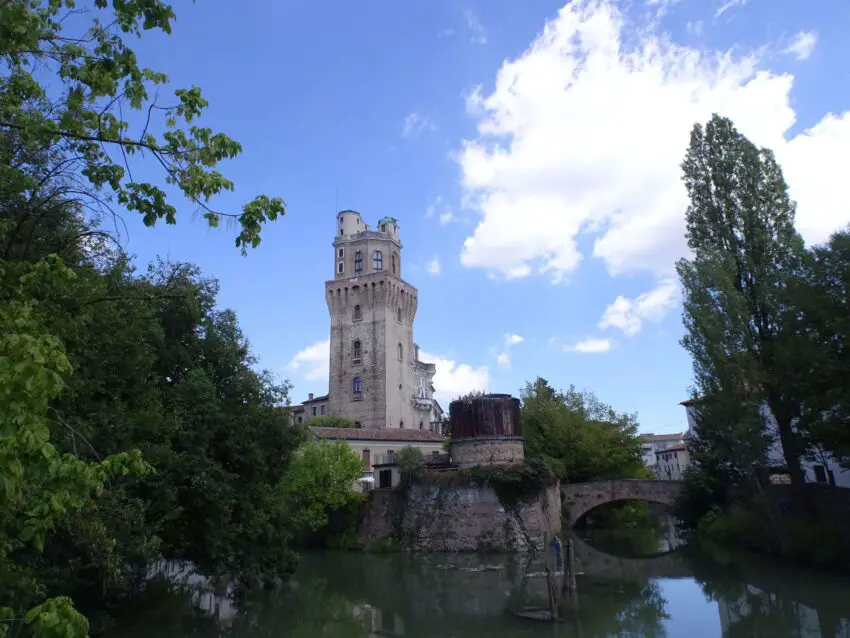During our recent trip to northern Italy’s Veneto Region, we also stopped in the pretty University town of Padua, about halfway between Verona and Venice. Contrary to its more famous neighbours, the city only sees a fraction of their visitor numbers, which makes exploring its sights all the more rewarding.
Apart from some beautiful palazzos and churches, you can visit a series of well-preserved 14th century frescoes, walk across Europe’s second-largest square and explore the oldest Botanical Garden in the World. Furthermore, you’ll find one of Christianity’s most important pilgrimage sites as well as the famous “Café without Doors”.
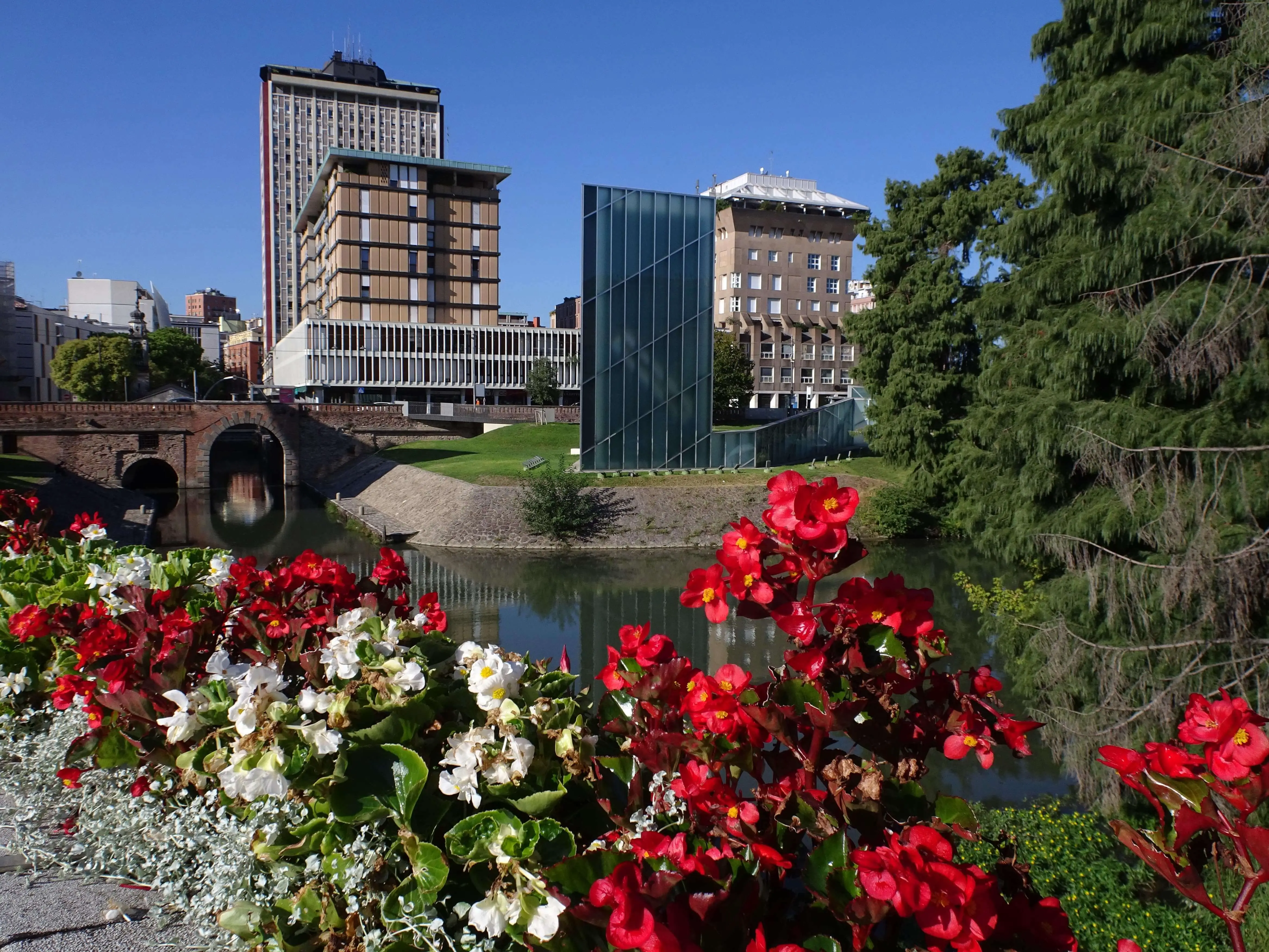
Padua has enough worth-wile sights to keep you occupied for a few days. If your time is limited, though, you can still see the absolute highlights in a day. Read on for my ultimate one-day itinerary.
This post may contain affiliate links and I might earn a small commission at no additional cost to you. For more info click here.
The ultimate one day itinerary for Padua
Scrovegni Chapel
Start your exploration at Padua’s most famous sight: the fresco-covered Scrovegni Chapel. Created by famous late Gothic artist Giotto di Bondone, the paintings depict scenes from the Life of Jesus and Mary. Apart from a vivid portrayal of the Last Judgement with graphic depictions of Hell, you’ll find plenty of dynamically painted scenes which were well ahead of their time, stylistically.
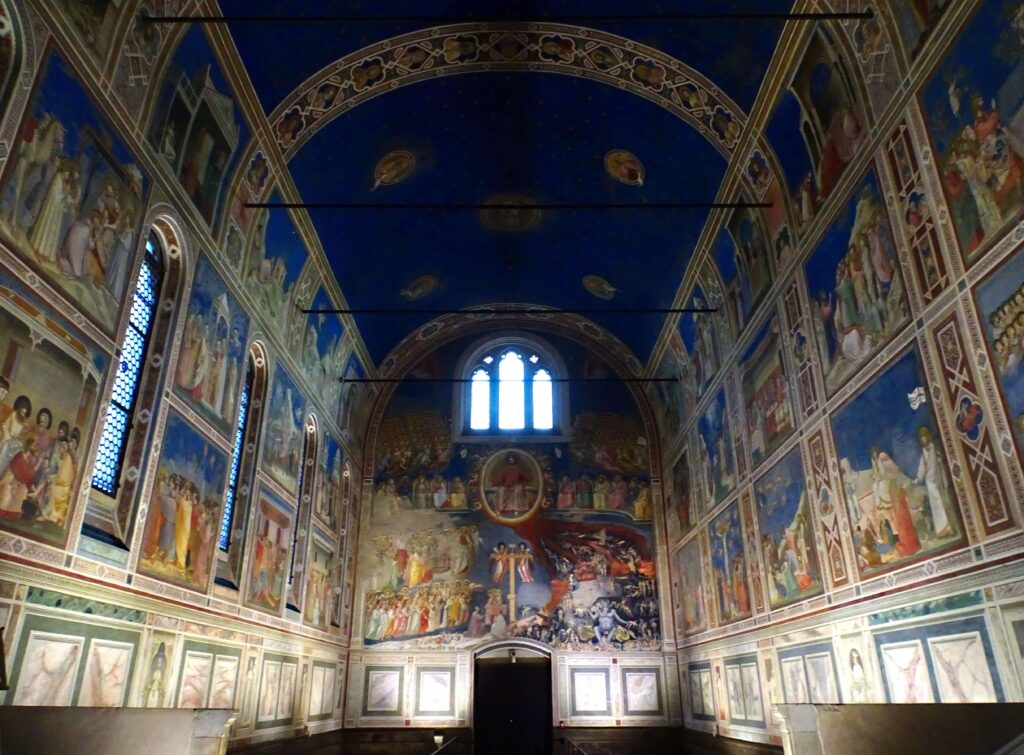
Entrance to the Scrovegni Chapel is with a timed ticket, so it pays to pre-book, which you can do on their website. At the moment, the first slot is at 9AM.
City Museum or Museum of Applied Arts
The ticket to the Scrovegni Chapel also includes entrance to the Musei Civici degli Eremitani and the Palazzo Zuckermann. Both of them warrant a visit but are rather big, so if you only have a day in Padua, I suggest picking one of the two. The City museum is located right next to the chapel and contains both archaeological artefacts from the Etruscan and Roman Eras as well as medieval artworks.
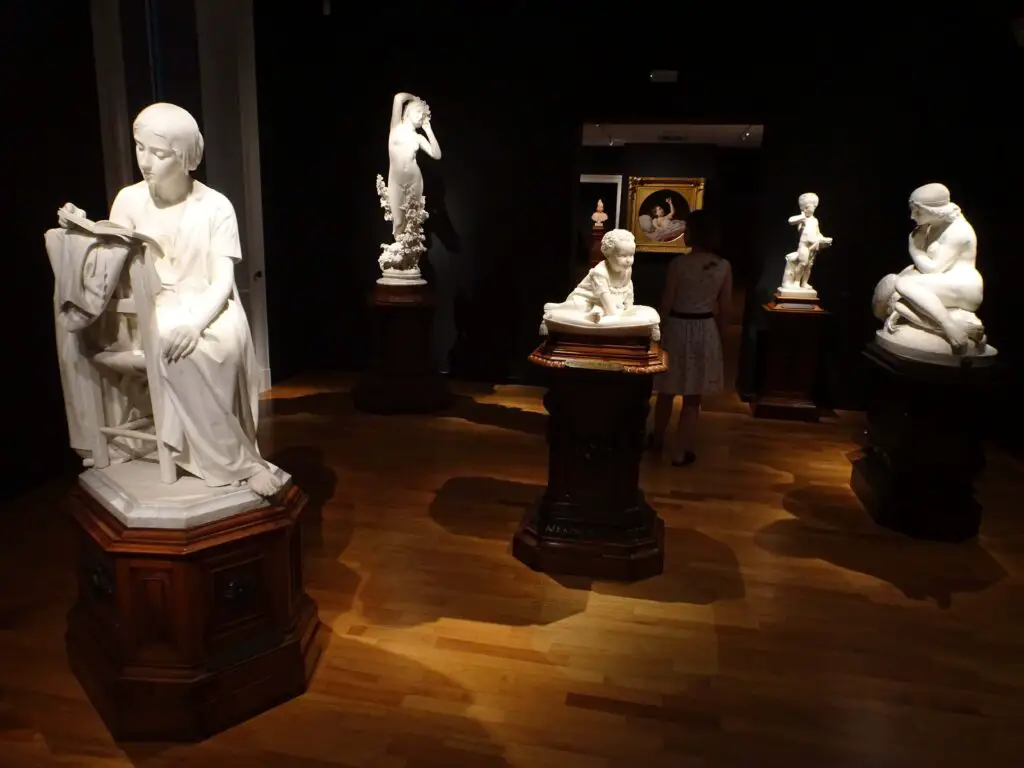
The Museum of Applied Arts in the nearby Palazzo Zuckerman on the other hand, displays artful furniture and objects of daily use from medieval times to late 19th-century. Which one is more worth visiting depends on your personal preference. I liked the Museo Civici a bit better but as an archaeologist, I might be slightly biased;-)
Lunch Break at Café Pedrocchi
Stop for a late breakfast or early lunch at this Padua institution. Also known as the “Café without doors”, the Café Pedrocchi has been the haunt of local students and artists since its inception in the late 18th century. The nickname refers to the fact that in the Green Room of the Café, people were allowed to socialize without having to order anything – a tradition that still continues to this day.
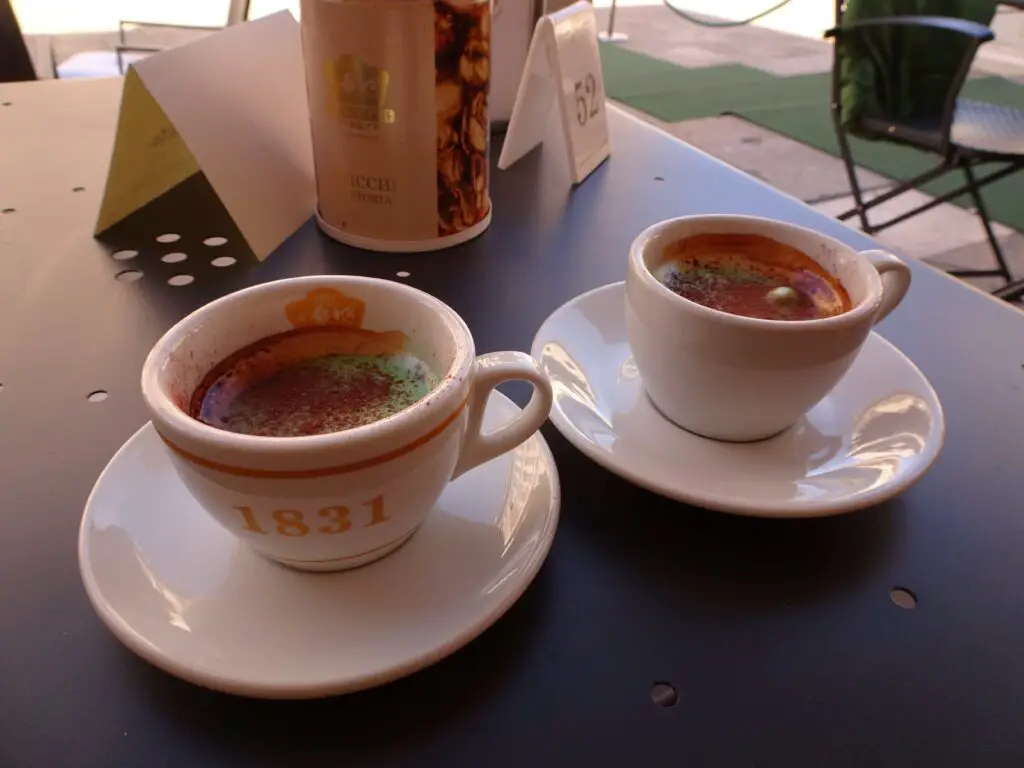
Still, I suggest that while you’re here, you try the famous Pedrocchi Coffee mixed with cream and mint syrup at least once. It’s surprisingly refreshing on a hot summer day. There are also snacks and sweets available, in case you’re in need of something more substantial.
Palazzo de la Ragione
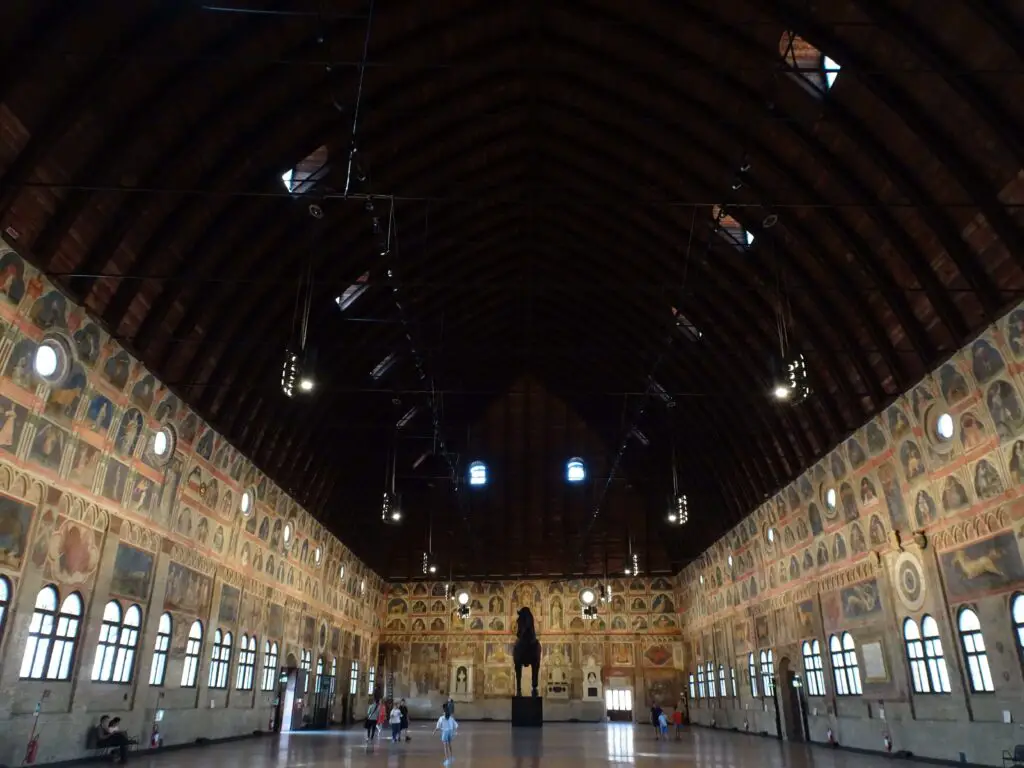
Padua’s former town hall and palace of justice dominates the city’s central market square and is decorated by another set of famous frescoes running around the walls. Several curiosities, like a Foucault’s Pendulum and a huge wooden horse sculpture, fill the big central hall, while the arcaded loggia running around the hall has some nice views of the adjoining squares.
Cathedral Baptistery
To me, the striking Cathedral Baptistery was even more impressive than the Scrovegni Chapel. The central dome is covered in a depiction of Jesus in the Pantocrator Style, surrounded by countless angels and saints.
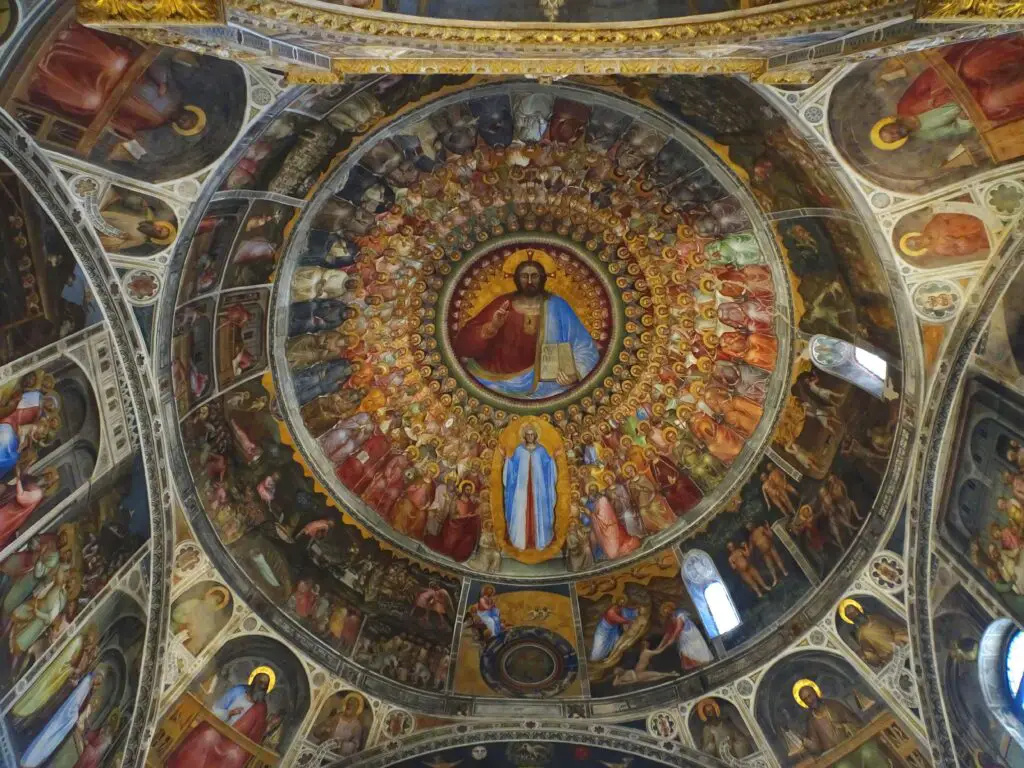
The walls feature scenes from the lives of Jesus, Mary and John the Baptist, while the small apse surrounding the altar is decorated with apocalyptical scenes from the Book of Revelations. It’s easy to lose yourself in the countless beautiful scenes. By contrast, the adjoining cathedral itself is rather austere and not necessarily a must-see sight in my opinion.
The entrance is by guided tour only, but contrary to the Scrovegni Chapel, we just showed up and got a spot with the next group, so it requires less pre-planning.
St. Anthony Basilica
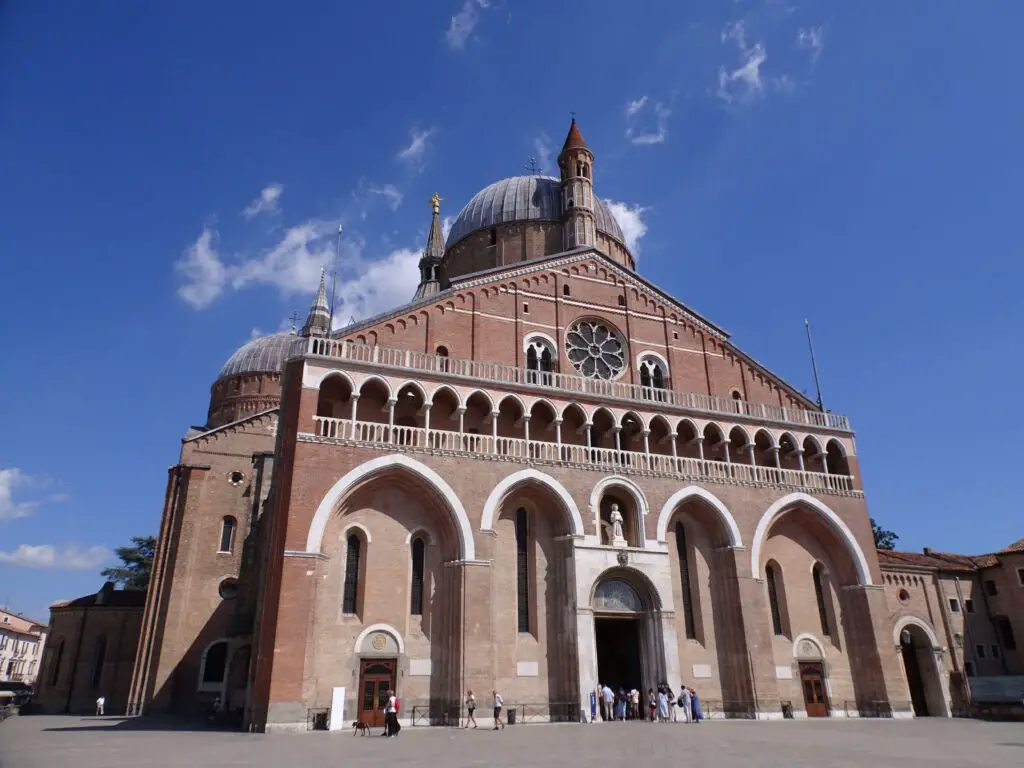
This beautiful pilgrimage church near the southern end of the city centre contains the relics of the namesake saint as well as a series of beautifully decorated chapels. Especially striking is the lavish chapel containing the sarcophagus of St. Anthony himself as well as fresco-covered the Cappella di San Giacomo on the opposite side of the nave. Adjacent to the church is a series of pretty cloisters that you shouldn’t miss.
Botanical Garden
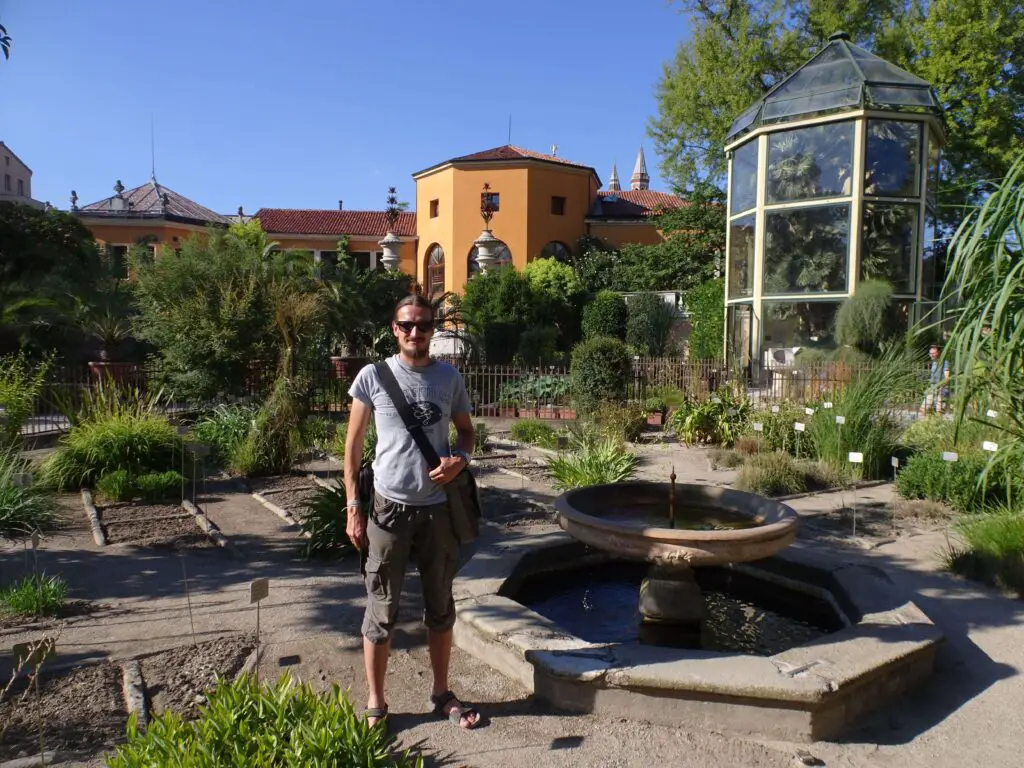
The Orto Botanico di Padua has the distinction of being the Oldest Botanical Garden in the World but even without this pedigree, it would be well-worth visiting. Apart from the historical garden attractively combining natural and man-made features, there are a series of modern greenhouses recreating several biospheres. It’s a fantastic place for a stroll or to rest your aching bones after walking around the city all day long.
Prato della Valle Square and Dinner
Directly to the west of the Botanical Garden, you’ll find the Prato della Valle, Europe’s second-biggest square after the Red Square in Moscow. Contrary to the record-holder, this one sports a pleasant central meadow surrounded by a small canal.
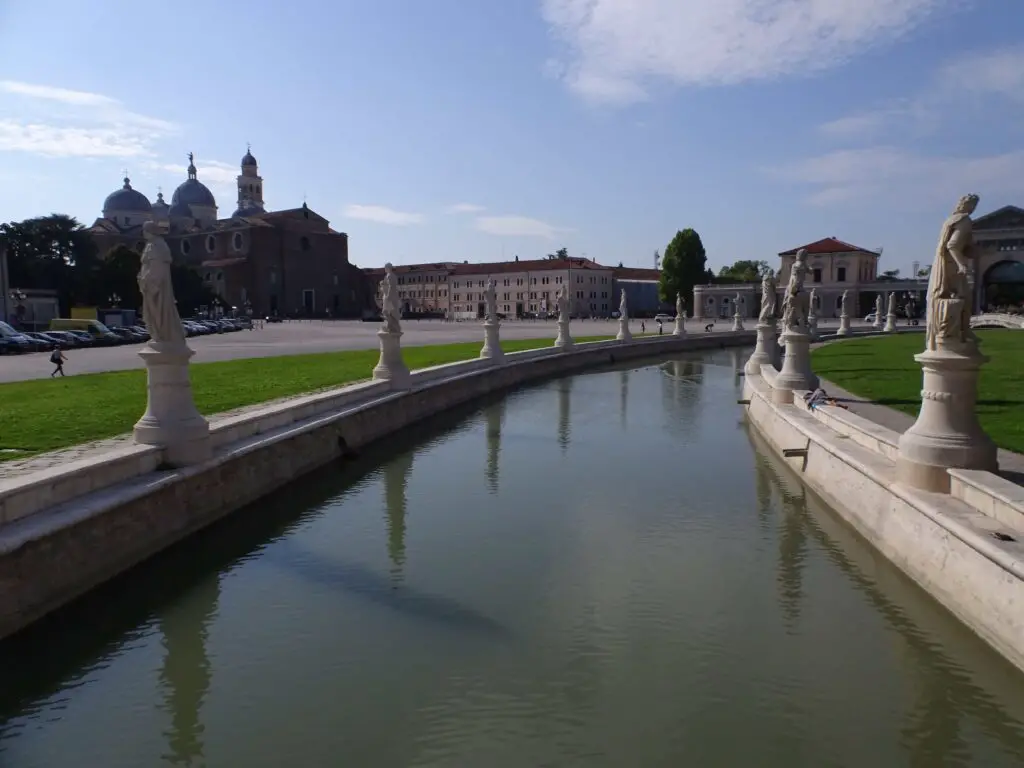
The area is surrounded by 78 statues depicting famous Italian persons as well as the odd international figure (Gustav Adolf II of Sweden and Stephan Báthory of Transylvania somehow made the cut). The eastern and northern edge of the square feature several restaurants, ideal to top of your day of exploration with a typical regional speciality, like Risotto con i Rovinassi (Rice with Chicken Liver).
Map of Padua
Have a look at this map containing all the places mentioned above.
How to get to Padua
Padua can easily be reached by train from Venice (about 30 minutes/5€), Verona (about 1 hour/8€) or Vicenza (about 30 minutes/5€). Padua’s Train station is located slightly north of the city centre across the Piovego Canal.
Where to stay in Padua
There’s no shortage of places to lay your head in Padua, although cheaper options tend to be somewhat sparser and a little out of the centre. We stayed at Albergo Junior, a few minutes north of the train station. It’s a cozy and very affordable bed and breakfast run by a friendly elderly couple.
The city centre is full of midrange options with great ratings, like Scrovegni Rooms and Breakfast or Residence Eremitani, which are right next to the Scrovegni Chapel.
The sumptuous Palazzo Mantua would be at the top end of the spectrum.
Have a look at the map above for more options.
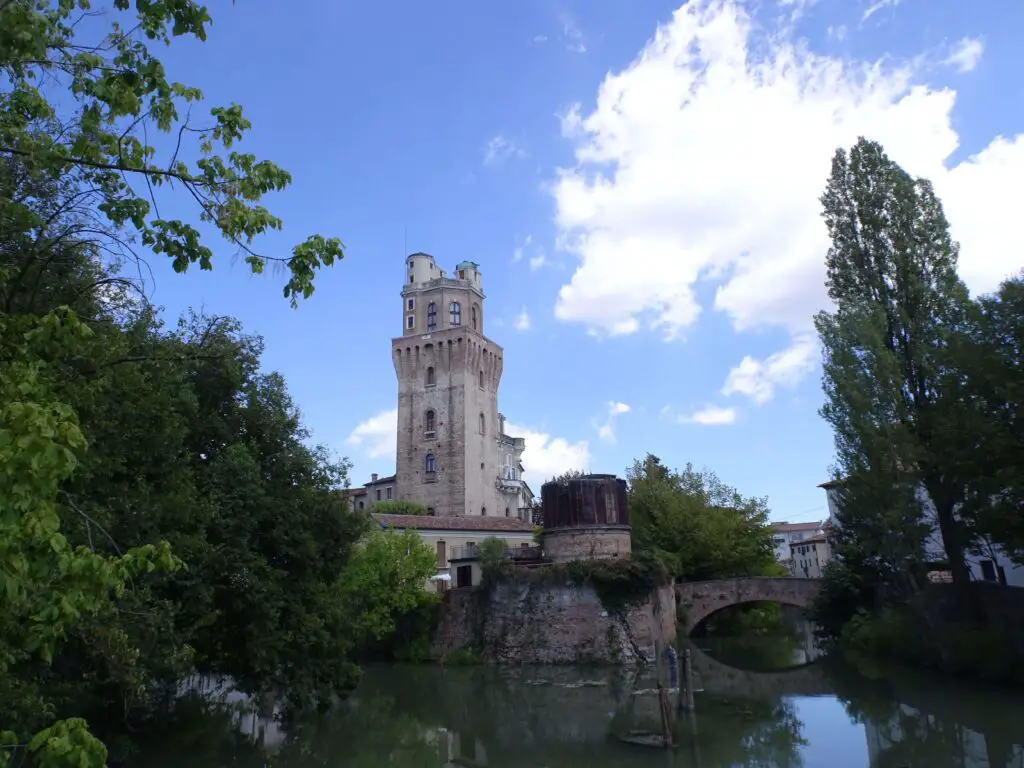
What else to do in Padua
The 14th-century fresco cycles of Padua, Italy – Which of the UNESCO sites are worth visiting?
Exploring Padua Botanical Garden, the Oldest Botanical Garden in the World
